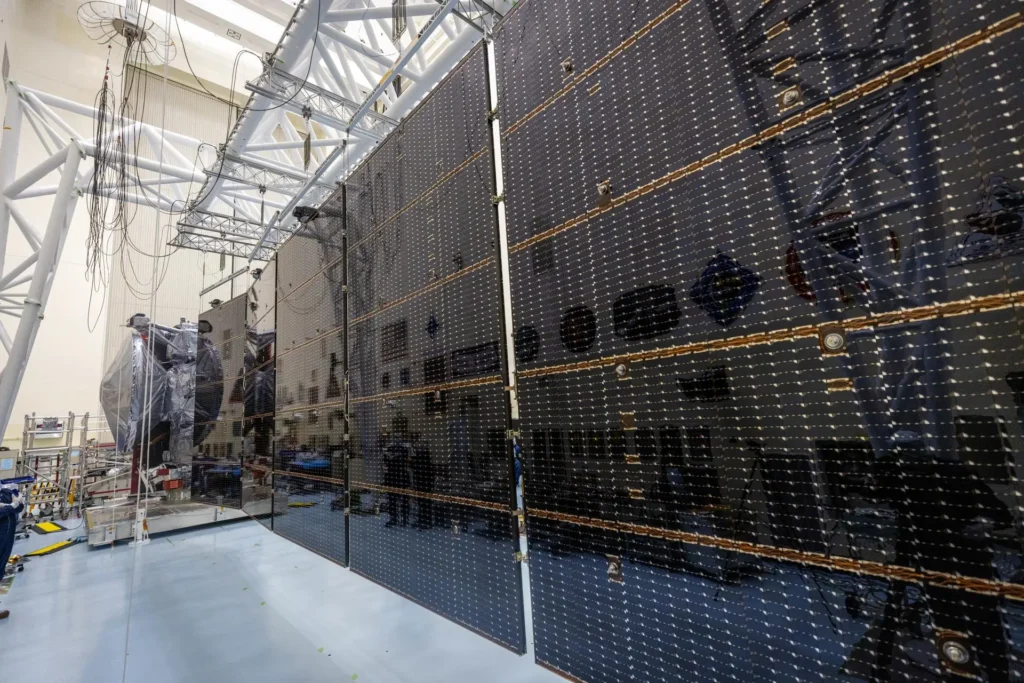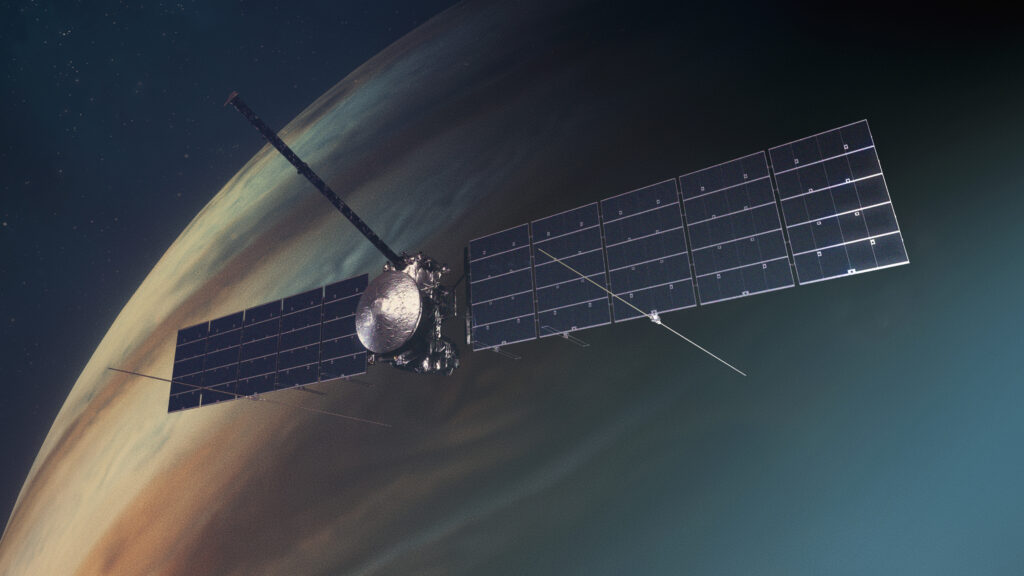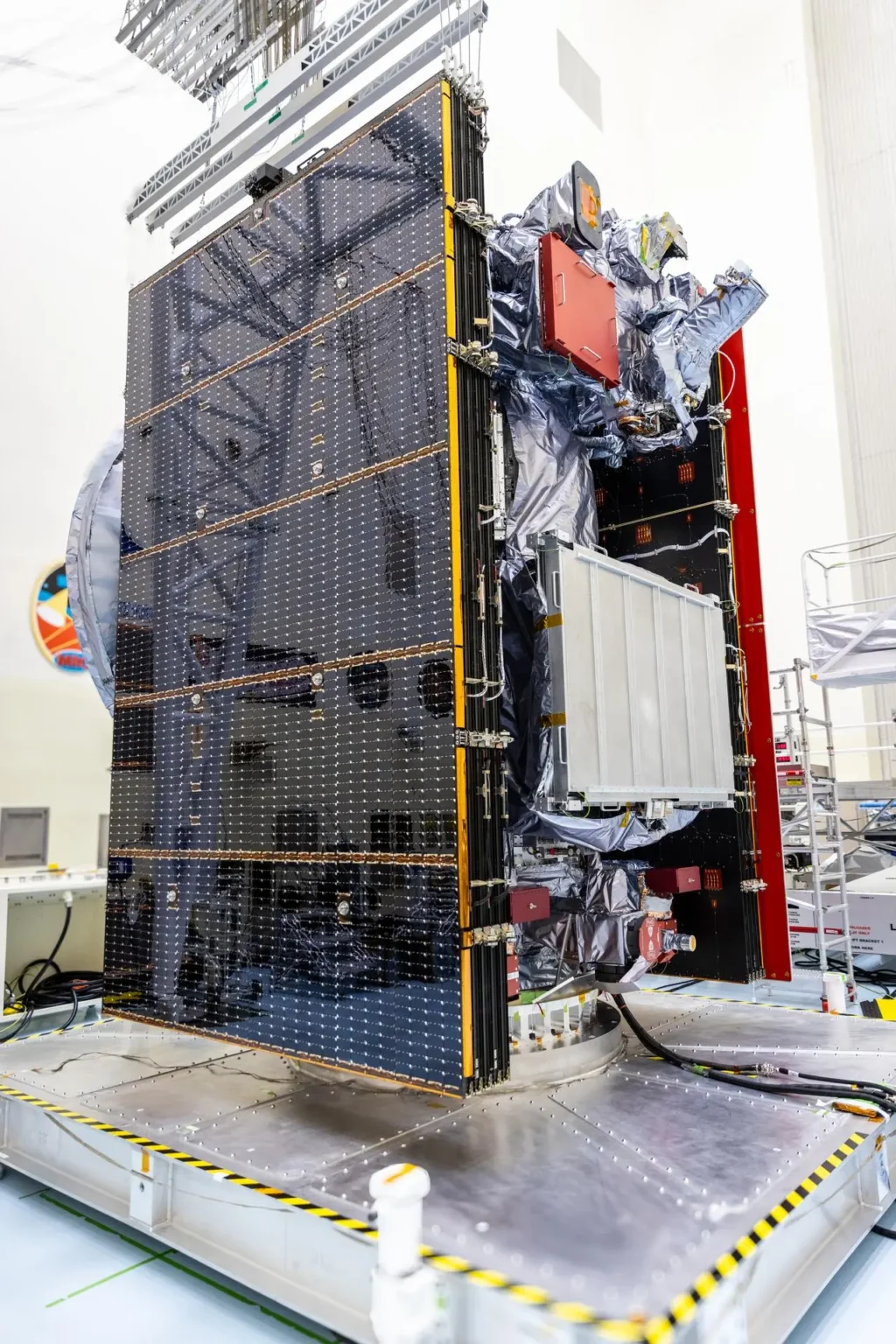The largest spacecraft ever built by NASA to explore other planets has gotten “wings”. We’re talking about the massive solar panels that will power the Europa Clipper mission on its way to Jupiter and its icy moon Europa.
NASA’s largest interplanetary vehicle
Jupiter’s orbit lies at a distance of more than 700 million kilometers from the Sun. The neighborhood of the gas giant receives only 3% to 4% of the amount of sunlight that reaches the Earth. Therefore, in order to provide the Europa Clipper with the energy it needs to operate, NASA engineers had to equip it with the largest solar panels ever installed on an interplanetary probe.

Each Europa Clipper solar panel consists of five segments. Its total length is 14.2 meters and its height is 4.1 meters. They are so large that they can only be opened one at a time in a clean room at Kennedy’s Payload Hazardous Servicing Facility, where engineers are preparing the vehicle for an upcoming launch.
During the launch, the Clipper’s solar panels will be in a folded state. Their deployment will begin about 90 minutes after the vehicle reaches space and will take 40 minutes to complete. When fully deployed, the Europa Clipper with “wings” will have a span of 30.5 meters. This is more than the size of a basketball court!
The apparatus will also deploy six battery-attached antennas. They are part of a radar that will search for water beneath Europe’s thick ice shell. The antennas also boast very impressive dimensions. Their length in the perpendicular direction is 17.6 meters.
Jupiter’s cold environs
When Europa Clipper reaches Jupiter, its huge batteries will be able to generate 700 watts of power. That’s not much. It takes about the same amount to run a small microwave or coffee machine. But the probe will have enough power to power all systems and scientific instruments.

The batteries must also operate in extreme cold. In Jupiter’s shadow, equipment temperatures will drop to – 240 °C. To make sure the panels could withstand such extreme conditions, engineers tested them in a specialized cryogenic chamber at the Liège Space Center in Belgium.
Europa Clipper launch date
At the moment, the main issue with the Europa Clipper is the reliability of its transistors. In May, it was discovered that some of the electronic components installed aboard the spacecraft failed at lower radiation doses than expected. This could jeopardize the success of the mission.

NASA hasn’t made a decision on the Europa Clipper transistors yet. Engineers are still testing the electronics of the vehicle. If a replacement is needed, the Europa Clipper launch will be delayed by at least a year. If no replacement is needed, the vehicle will be launched in October 2024.
According to JPL


